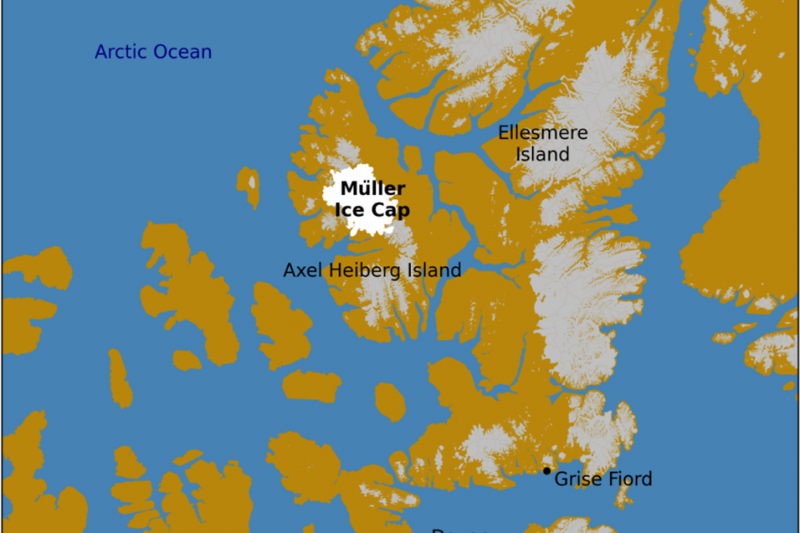
Field Camp on the Muller Ice Cap during 2023 radar surveys.
UM Researchers Set to Drill Deepest Ice Core in Canadian History on Müller Ice Cap
Researchers from the University of Manitoba are traveling to Müller Ice Cap, on Axel Heiberg Island, Nunavut, where they will recover the deepest ice core ever drilled in Canada.
This week, researchers from the University of Manitoba are traveling to Müller Ice Cap, on Axel Heiberg Island, Nunavut, where they will recover the deepest ice core ever drilled in Canada.
The Müller Ice Cap Project, led by Dorthe Dahl-Jensen, a Canada Excellence Research Chair in Arctic Ice, Freshwater Marine Coupling, and Climate Change, aims to extract a 600-meter ice core, which will provide a roughly 10,000-year record of climate and sea conditions in the Canadian Arctic.

Map showing the location of Müller Ice Cap.
In 2023, the research team visited Müller Ice Cap to conduct ice-penetrating radar surveys and select a suitable drill site for the climate record they seek. This year, the team is returning to drill the core.
Over the next two months, the team will drill the 600-meter ice core in 2-3-meter sections. This process will require the drill to be attached to a cable, making hundreds of runs up and down the hole until it reaches bedrock. The 2-3-meter sections of the ice core will be transported to the Canadian Ice Core Laboratory in Edmonton, where they will be analyzed in the fall.
David Babb, a researcher at the Centre for Earth Observation Science at UM, notes that the northern latitude and high elevation of the drill site provide an excellent opportunity to understand past climatic conditions in the Arctic.
While researchers know that sea ice extent and glaciers are rapidly changing, it remains unclear how these changes compare to those of the past. This project will significantly improve their understanding of past Arctic sea ice and climate conditions, offering crucial insights into ongoing changes in the region.
To follow the research team’s progress, check out their daily blog, Field updates from Muller Ice Cap.






